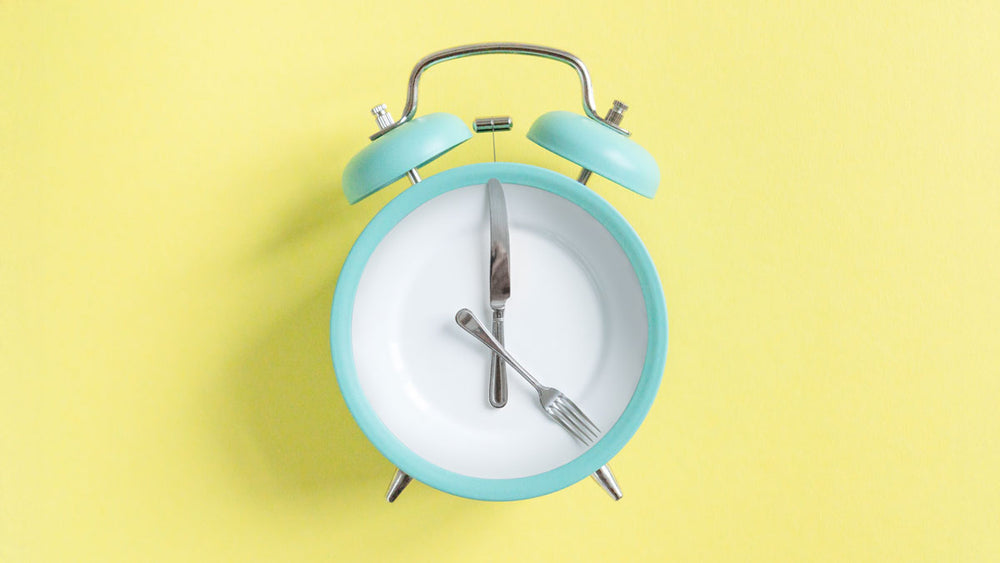Circadian Rhythm Fasting: Aligning Your Eating Window with Your Body’s Natural Clock
You have probably heard of time-restricted eating (TRE), also known as intermittent fasting. However, there is a new kind of TRE you may have been sleeping on: circadian rhythm fasting. Let’s wake up to this concept.
Understanding Circadian Rhythm: The Body's Internal Clock
First of all, what is the circadian rhythm? It can be described as our body’s “master clock” and refers to the changes we experience in a 24-hour cycle. These changes include sleep and wake patterns, hormone release, temperature regulation, and even digestion. The circadian rhythm is mostly affected by light versus darkness.
Biologically and physically, this “clock” exists in the brain in a clump of nerve cells called the suprachiasmatic nucleus. One of its key functions is to respond to the amount of light the eye detects, producing or suppressing a hormone called melatonin as it gets darker outside, thereby promoting sleepiness. Your body then knows when to initiate the above-mentioned processes based on the time of day it perceives. For example, during nighttime, your body cools its temperature and slows digestion. This can explain why, in the winter months, you may find that you get tired earlier in the evening as the sun sets earlier.
The Impact of Circadian Disruption on Health
Like most clocks, the circadian rhythm can get out of whack. Jet lag, working night shifts, and even electronic light exposure are some of the ways this can occur. The consequences of disrupting this rhythm can include short-term issues such as fatigue and difficulty concentrating. Long-term, more serious health conditions like obesity, mood disorders, and hypertension may occur. Disruption in circadian rhythm is even an emerging new risk factor for CVD.
The Core Principles of the Circadian Diet
So, how does this all relate to diet? Research indicates that TRE can offer numerous benefits, including enhanced insulin sensitivity and reduced fat accumulation. According to the Sleep Foundation, the circadian diet is a form of time-restricted fasting that aligns your eating window with your circadian rhythm. Essentially, eating when it's light outside and fasting when it's dark. For example, your first meal may be at 8 AM, when it's daylight, with your last meal ending before the sun goes down, around 6 PM. It does not restrict what you eat, only when you eat. More research is needed to determine the optimal fasting time, and this duration may vary depending on the time of year.
Benefits of the Circadian Diet
Weight loss is one proposed benefit of the circadian diet. While it doesn’t restrict what you eat, limiting when you eat can impact total calories consumed over the course of the day. This may be especially beneficial for late-night snackers. Eating during the day aligns your meals with your body’s natural hunger and fullness hormones, ghrelin and leptin. This can help you identify hunger more clearly and cue your body to stop eating as it becomes full. Evidence suggests that TRE can improve glucose homeostasis, and the circadian diet may even promote better sleep. This may be in part due to the fact that digestion is an active process. If you eat too close to bedtime, your body may be actively working to digest while also trying to wind down, which can negatively impact your sleep quality.
Implementing the Circadian Diet
The circadian diet may not be for everyone. Individuals with eating disorders, those needing to gain weight, women who are pregnant or breastfeeding, and some people with type 2 diabetes requiring insulin are some examples of those who may not benefit. Just like any TRE diet, the best results will be achieved when you also focus on what you are eating, rather than just when. Ensuring your diet is balanced and practicing mindfulness will enhance your overall experience. Just like any eating pattern, you may need to experiment with the eating schedule that helps you feel your best. Consider trying an 8-, 10-, or 12-hour fasting window, depending on your current daylight hours, and adjust from there. Before too long, you may be such a pro at following the circadian diet that you can do it with your eyes closed, while sleeping, that is!
-
Andriessen, C., Fealy, C. E., Veelen, A., van Beek, S. M. M., Roumans, K. H. M., Connell, N. J., Mevenkamp, J., Moonen-Kornips, E., Havekes, B., Schrauwen-Hinderling, V. B., Hoeks, J., & Schrauwen, P. (2022). Three weeks of time-restricted eating improves glucose homeostasis in adults with type 2 diabetes but does not improve insulin sensitivity: a randomised crossover trial. Diabetologia, 65(10), 1710–1720. https://doi.org/10.1007/s00125-022-05752-z
-
Reddy, S., Reddy, V., & Sharma, S. (2023, May 1). Physiology, circadian rhythm. In StatPearls. StatPearls Publishing. https://www.ncbi.nlm.nih.gov/books/NBK519507/
-
Melkani, G. C., & Panda, S. (2017). Time-restricted feeding for prevention and treatment of cardiometabolic disorders. The Journal of physiology, 595(12), 3691–3700. https://doi.org/10.1113/JP273094
-
Summer J, and Singh, A. (2024). Circadian Rhythm Fasting. Accessed on June 13, 2025 from https://www.sleepfoundation.org/nutrition/circadian-rhythm-fasting.
























Comments
Join The Conversation...